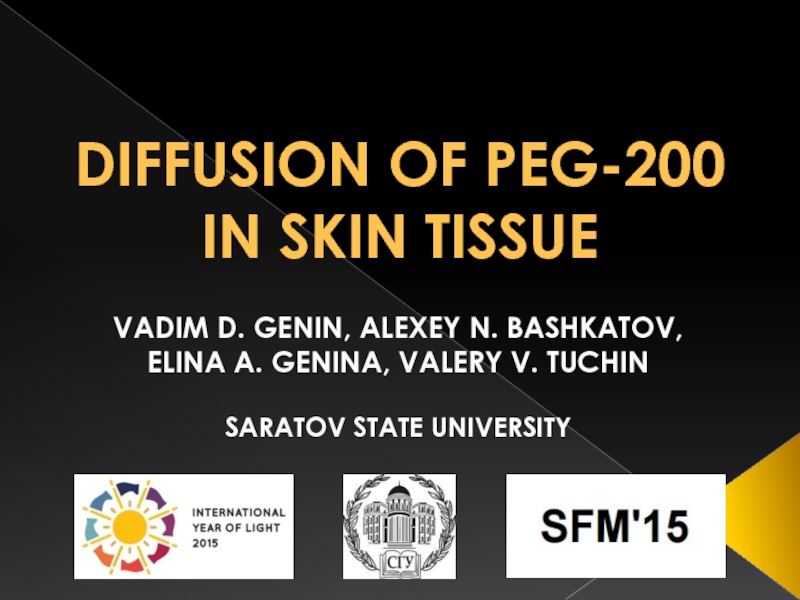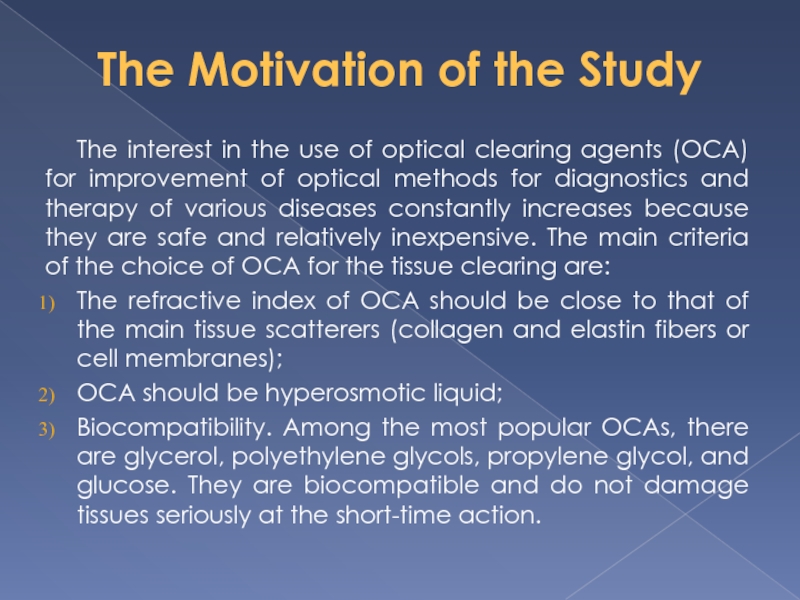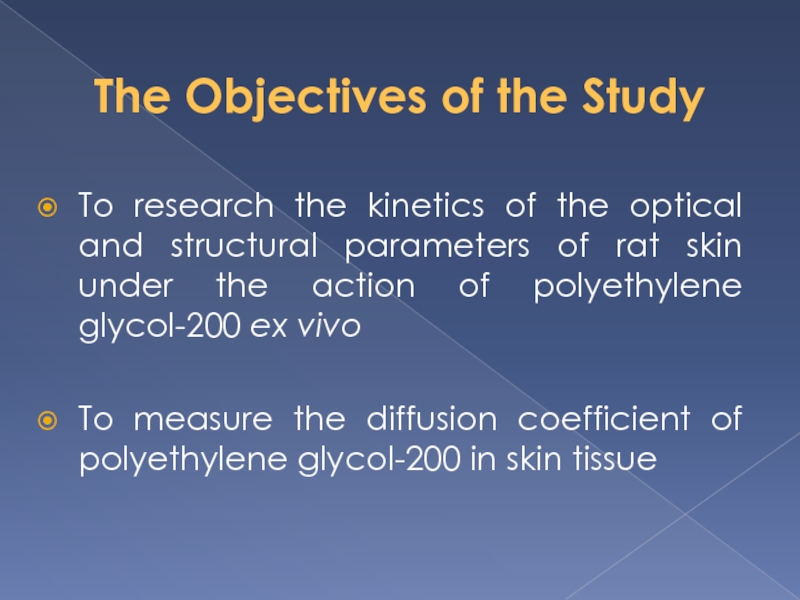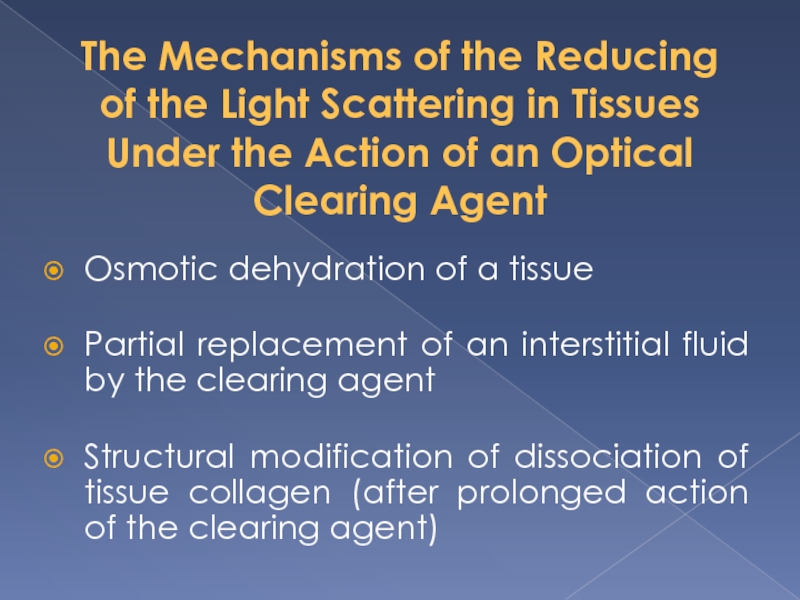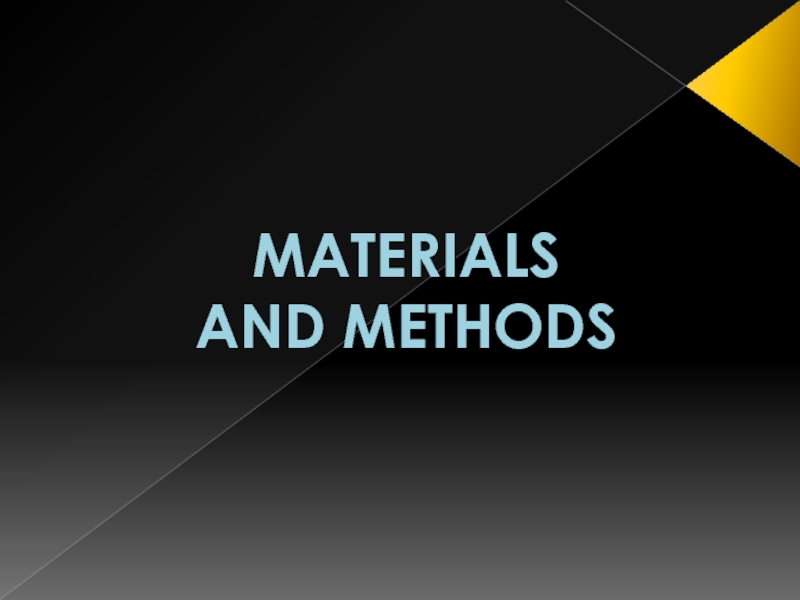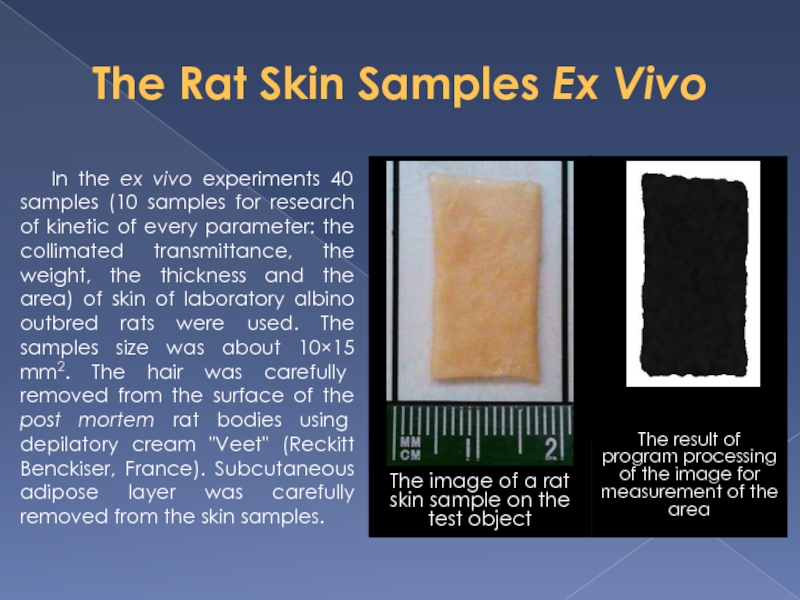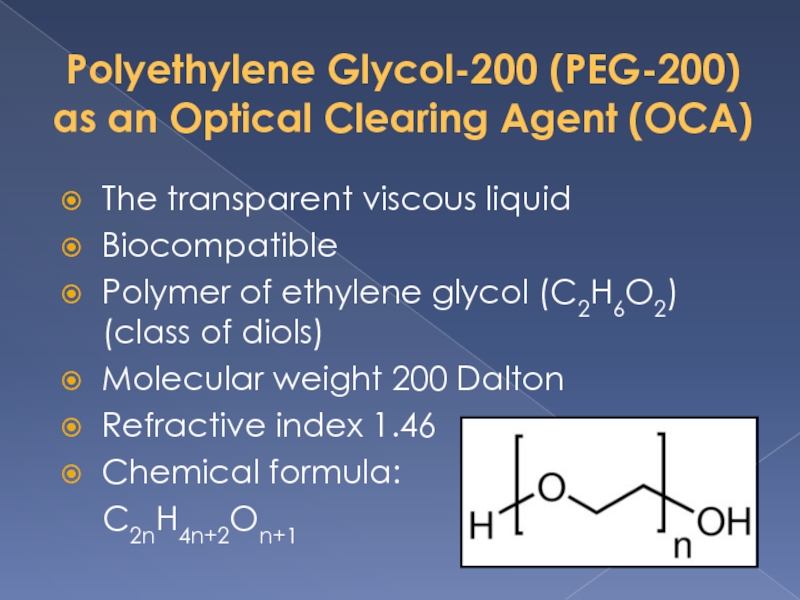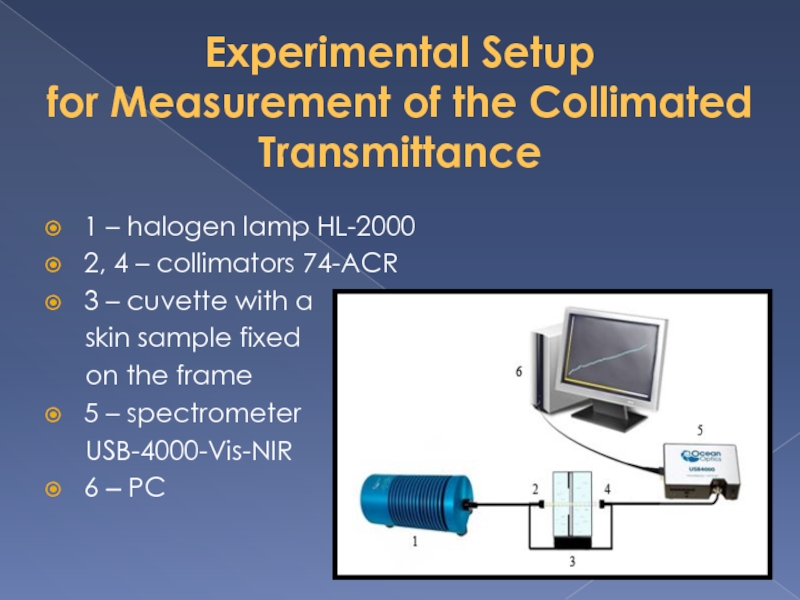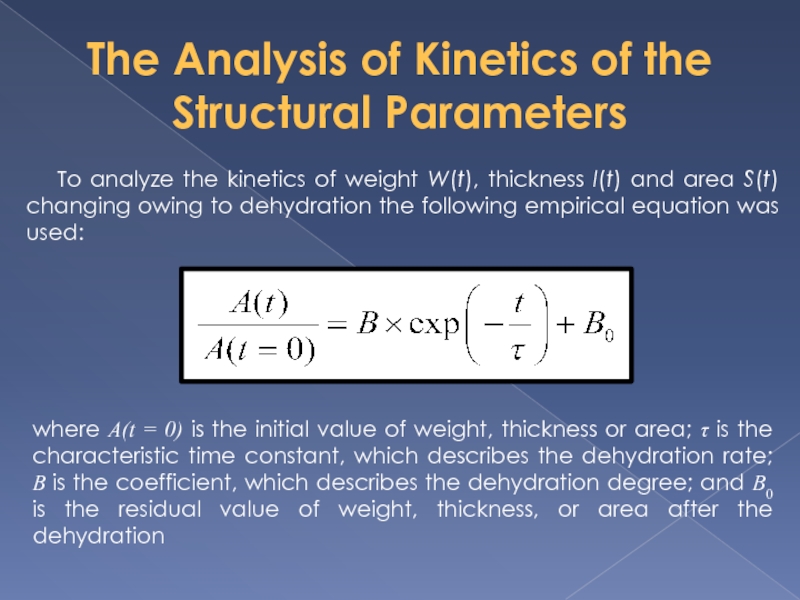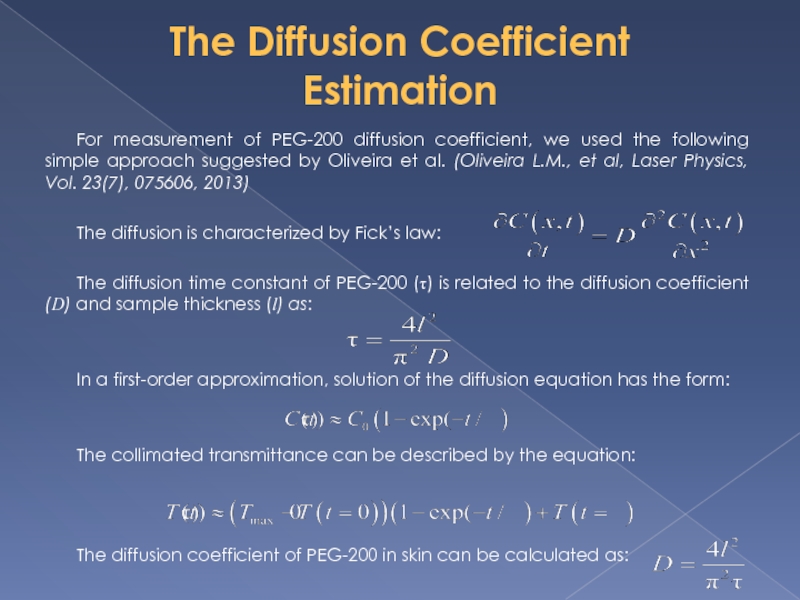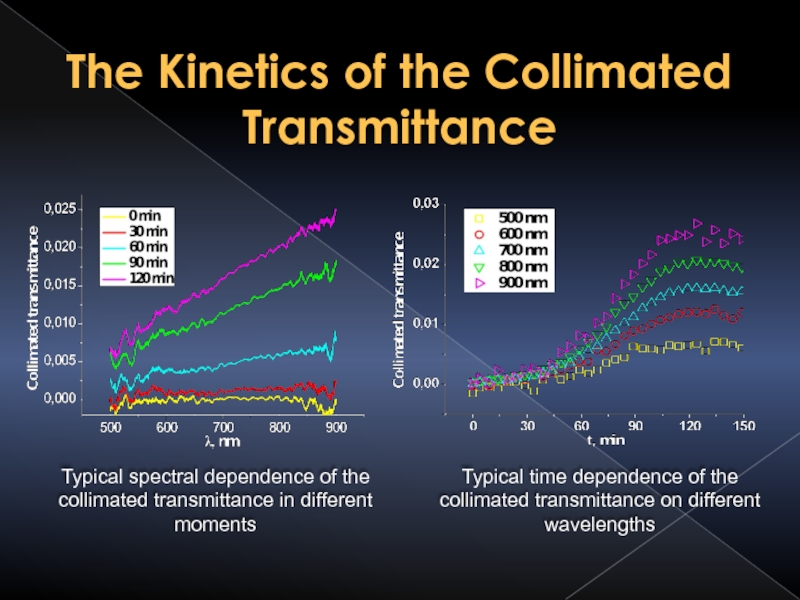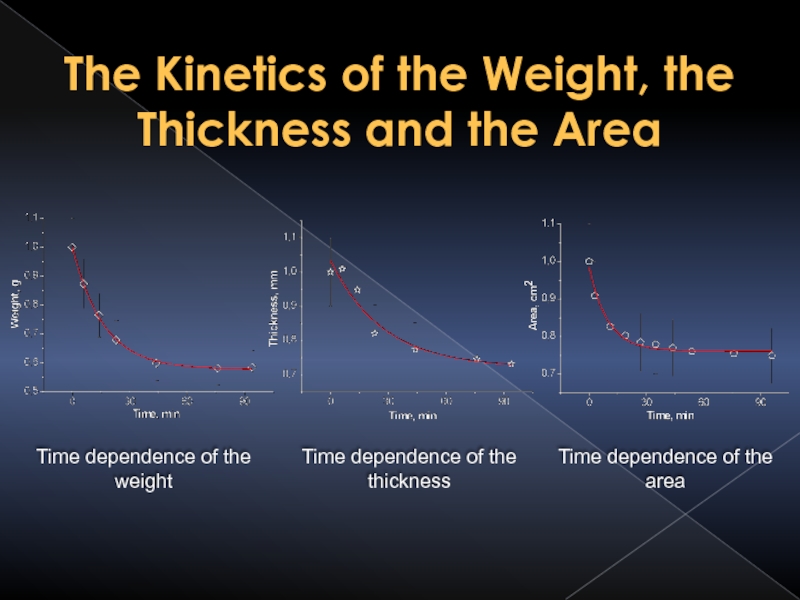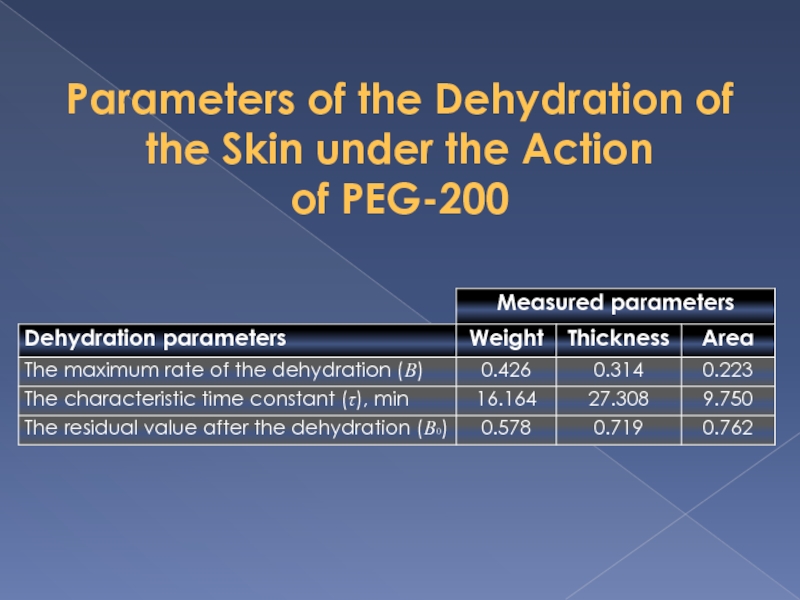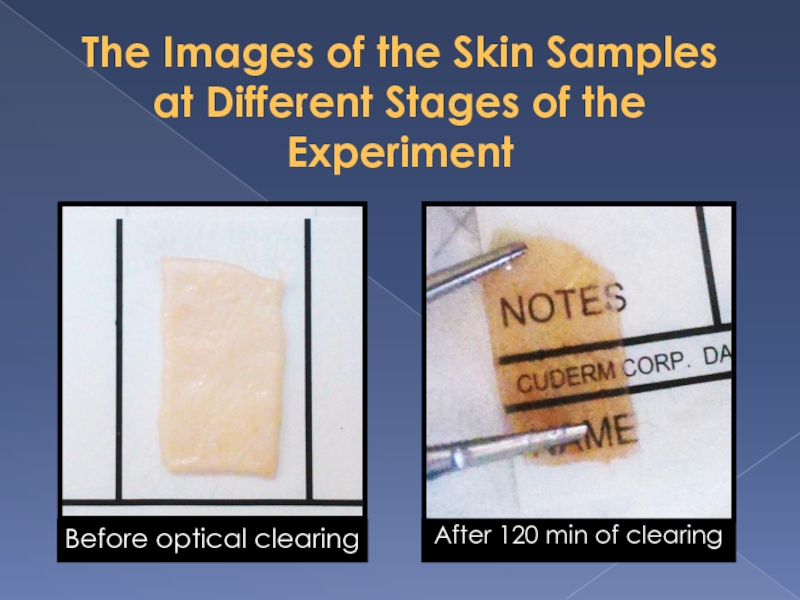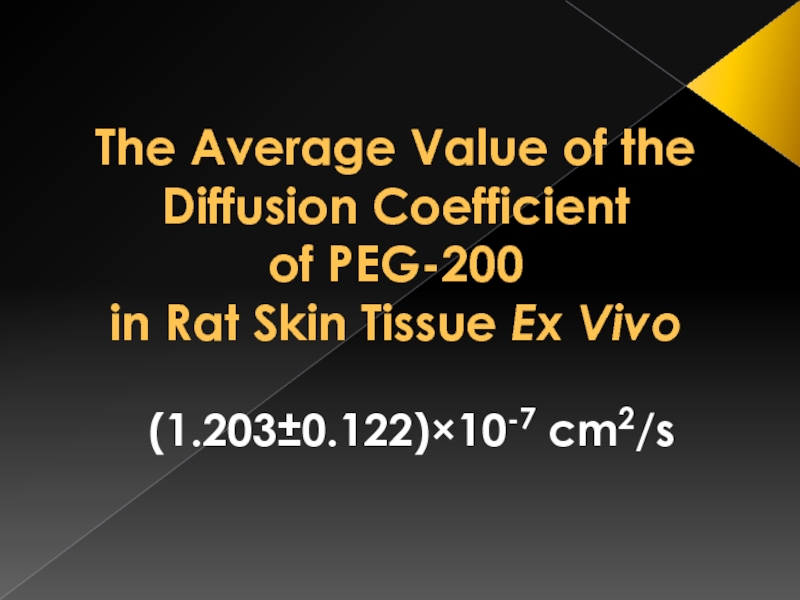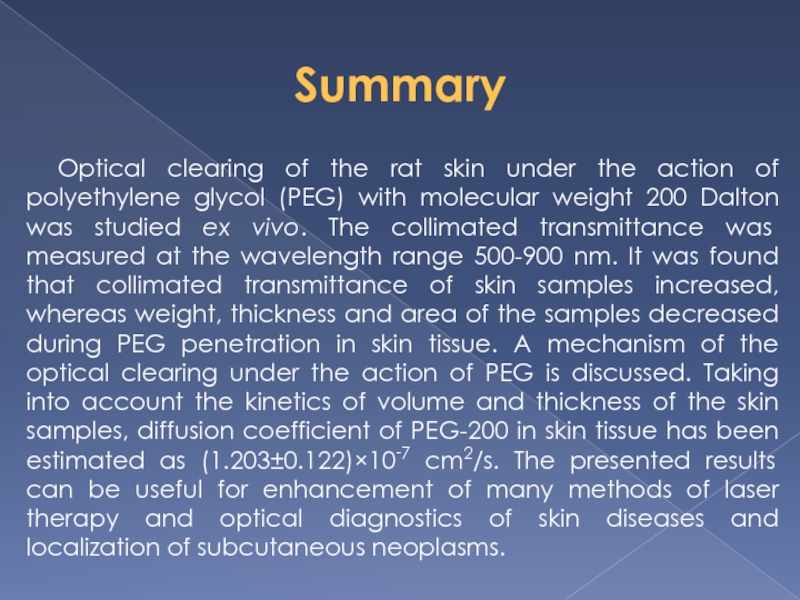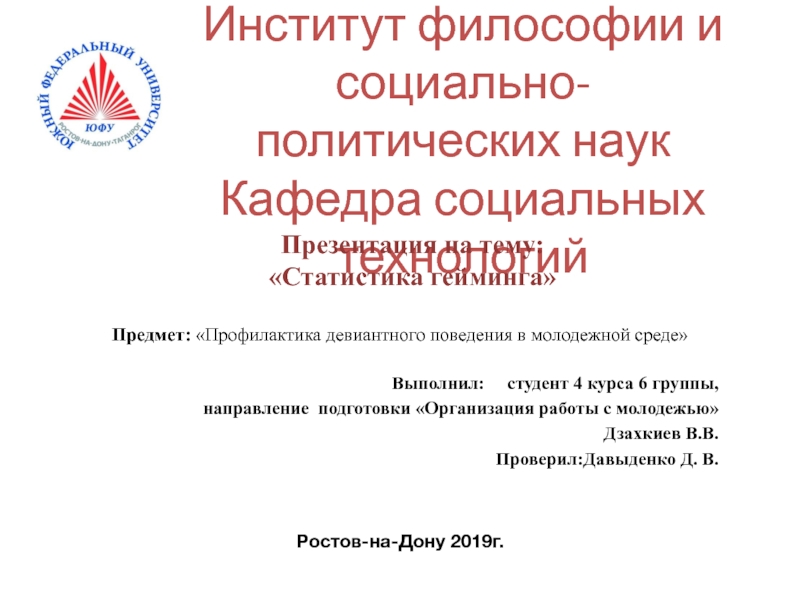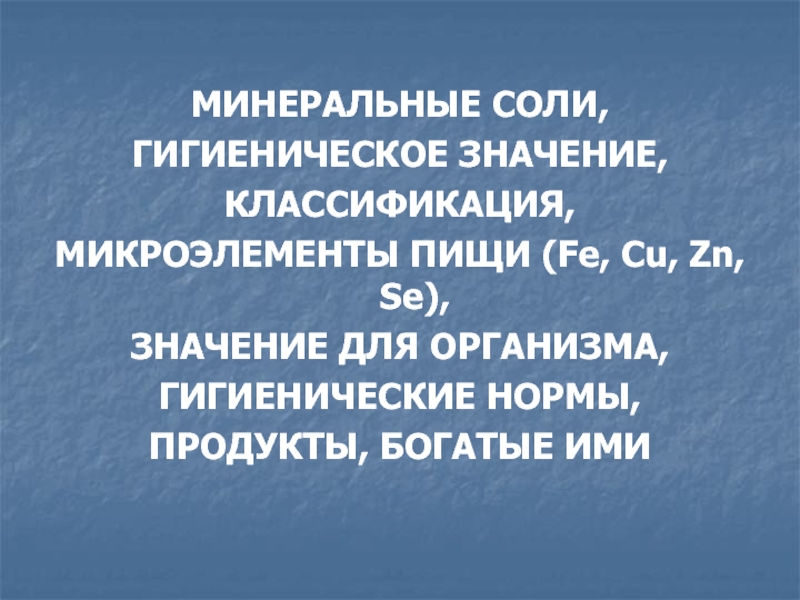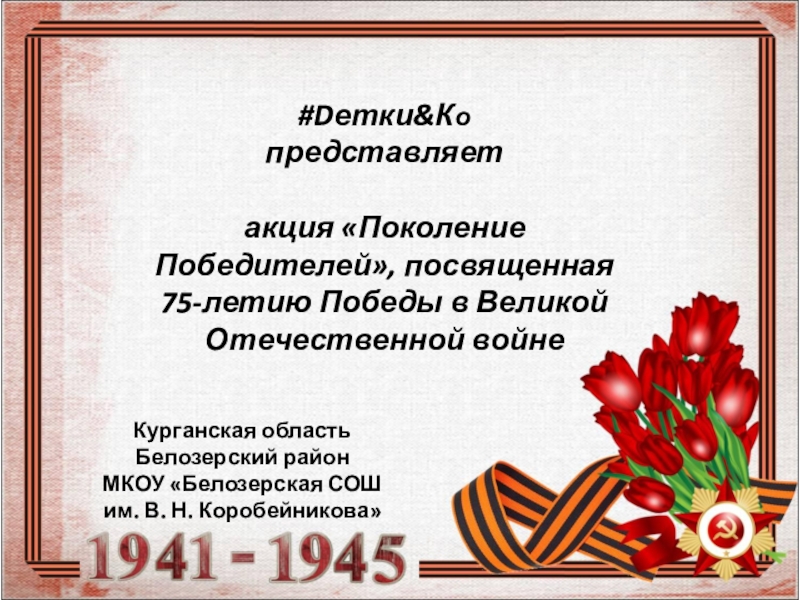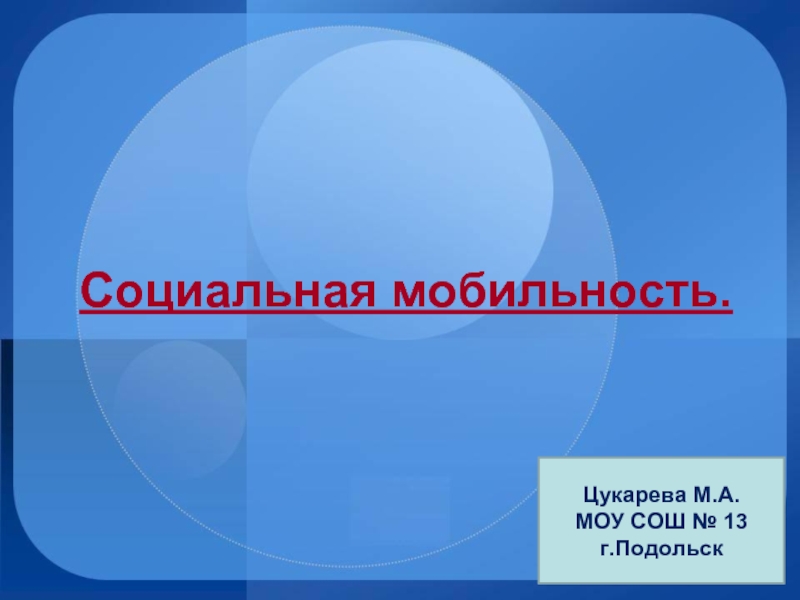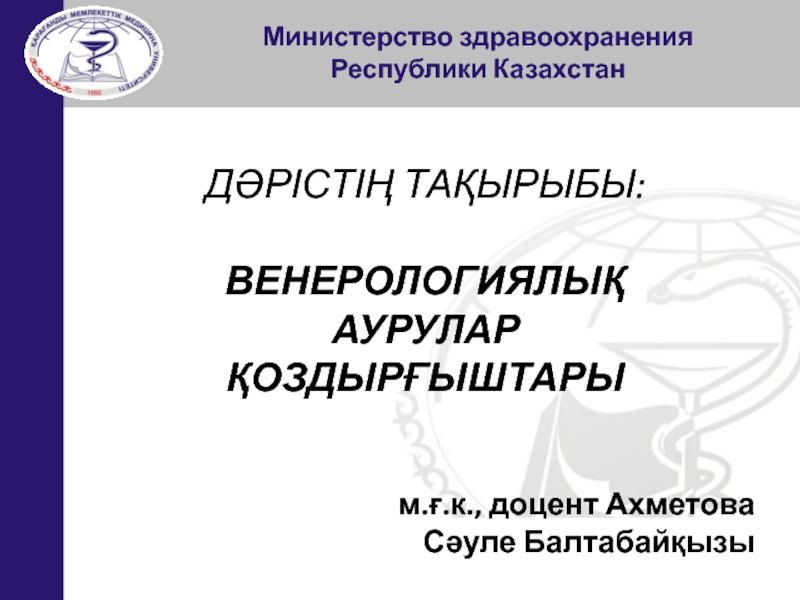Разделы презентаций
- Разное
- Английский язык
- Астрономия
- Алгебра
- Биология
- География
- Геометрия
- Детские презентации
- Информатика
- История
- Литература
- Математика
- Медицина
- Менеджмент
- Музыка
- МХК
- Немецкий язык
- ОБЖ
- Обществознание
- Окружающий мир
- Педагогика
- Русский язык
- Технология
- Физика
- Философия
- Химия
- Шаблоны, картинки для презентаций
- Экология
- Экономика
- Юриспруденция
DIFFUSION OF PEG-200 IN SKIN TISSUE
Содержание
- 1. DIFFUSION OF PEG-200 IN SKIN TISSUE
- 2. The interest in the use of optical
- 3. The Objectives of the StudyTo research the
- 4. The Mechanisms of the Reducing of the
- 5. MATERIALS AND METHODS
- 6. The Rat Skin Samples Ex VivoIn the
- 7. Polyethylene Glycol-200 (PEG-200) as an Optical Clearing
- 8. Experimental Setup for Measurement of the
- 9. The Analysis of Kinetics of the Structural
- 10. For measurement of PEG-200 diffusion coefficient, we
- 11. RESULTS
- 12. The Kinetics of the Collimated TransmittanceTypical spectral
- 13. The Kinetics of the Weight, the Thickness
- 14. Parameters of the Dehydration of the Skin under the Action of PEG-200
- 15. The Images of the Skin Samples
- 16. The Average Value of the Diffusion Coefficient
- 17. SummaryOptical clearing of the rat skin under
- 18. Thanks for Attention!
- 19. Скачать презентанцию
Слайды и текст этой презентации
Слайд 2The interest in the use of optical clearing agents (OCA)
for improvement of optical methods for diagnostics and therapy of
various diseases constantly increases because they are safe and relatively inexpensive. The main criteria of the choice of OCA for the tissue clearing are:The refractive index of OCA should be close to that of the main tissue scatterers (collagen and elastin fibers or cell membranes);
OCA should be hyperosmotic liquid;
Biocompatibility. Among the most popular OCAs, there are glycerol, polyethylene glycols, propylene glycol, and glucose. They are biocompatible and do not damage tissues seriously at the short-time action.
The Motivation of the Study
Слайд 3The Objectives of the Study
To research the kinetics of the
optical and structural parameters of rat skin under the action
of polyethylene glycol-200 ex vivoTo measure the diffusion coefficient of polyethylene glycol-200 in skin tissue
Слайд 4The Mechanisms of the Reducing of the Light Scattering in
Tissues Under the Action of an Optical Clearing Agent
Osmotic dehydration
of a tissuePartial replacement of an interstitial fluid by the clearing agent
Structural modification of dissociation of tissue collagen (after prolonged action of the clearing agent)
Слайд 6The Rat Skin Samples Ex Vivo
In the ex vivo experiments
40 samples (10 samples for research of kinetic of every
parameter: the collimated transmittance, the weight, the thickness and the area) of skin of laboratory albino outbred rats were used. The samples size was about 10×15 mm2. The hair was carefully removed from the surface of the post mortem rat bodies using depilatory cream "Veet" (Reckitt Benckiser, France). Subcutaneous adipose layer was carefully removed from the skin samples.Слайд 7Polyethylene Glycol-200 (PEG-200) as an Optical Clearing Agent (OCA)
The transparent
viscous liquid
Biocompatible
Polymer of ethylene glycol (C2H6O2) (class of diols)
Molecular weight
200 DaltonRefractive index 1.46
Chemical formula:
C2nH4n+2On+1
Слайд 8Experimental Setup
for Measurement of the Collimated Transmittance
1 – halogen
lamp HL-2000
2, 4 – collimators 74-ACR
3 – cuvette with
a skin sample fixed
on the frame
5 – spectrometer
USB-4000-Vis-NIR
6 – PC
Слайд 9The Analysis of Kinetics of the Structural Parameters
To analyze the
kinetics of weight W(t), thickness l(t) and area S(t) changing
owing to dehydration the following empirical equation was used:where A(t = 0) is the initial value of weight, thickness or area; τ is the characteristic time constant, which describes the dehydration rate; B is the coefficient, which describes the dehydration degree; and B0 is the residual value of weight, thickness, or area after the dehydration
Слайд 10For measurement of PEG-200 diffusion coefficient, we used the following
simple approach suggested by Oliveira et al. (Oliveira L.M., et
al, Laser Physics, Vol. 23(7), 075606, 2013)The diffusion is characterized by Fick’s law:
The diffusion time constant of PEG-200 () is related to the diffusion coefficient (D) and sample thickness (l) as:
In a first-order approximation, solution of the diffusion equation has the form:
The collimated transmittance can be described by the equation:
The diffusion coefficient of PEG-200 in skin can be calculated as:
The Diffusion Coefficient
Estimation
